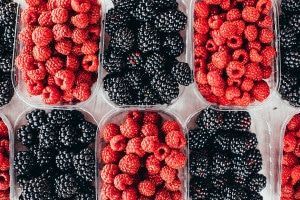Prepare To Grow Your Own Fruit And Vegetables for Green Living

Are you thinking about growing your own fruit and veg in your backyard? There are numerous reasons why this could be beneficial. First, it’s worth noting that growing fruit and veg in your
garden
is actually going to provide tremendous benefits to the environment. To do this, you are going to need to greatly improve the quality of the soil and once this occurs, it will trap more carbon dioxide underneath the ground. This means that you will reduce your carbon footprint through this process. You’ll also be less reliant on public food resources and therefore will help to reduce the pressure on the limited number of farms around the country.
Furthermore, research does suggest that growing your own fruit and veg will provide products that are far better for you. You won’t have to worry that these have been treated with dangerous chemicals that could have unknown impacts on your health and wellbeing. You could even save money in your budget by growing your own produce.
Now that the benefits of taking this step are abundantly clear, let’s explore some of the best ways to approach this challenge and the hurdles that you will face.
Composting Is Key
The first step that you need to get to grips with if you’re going to grow your own products is composting . You must think about how to compost the right way as this is going to greatly improve the quality of your soil. That’s going to help ensure that your plants do grow big and strong, providing you with solid produce that you will be able to rely on and sample. Composting is quite simple when you get down to the basics. You just need to use your food waste such as vegetable skins and newspaper to create mulch which can then be condensed before being added to the soil. This is going to help your plants grow. If you want to take things one step further, you can also think about using earthworms. Research suggests that earthworms can provide tremendous benefits in terms of composting and help provide an even richer soil. This is always going to be fantastic news for farmers.
Buying The Seeds
You do need to make sure that you are choosing where you buy your seeds from carefully. It’s important that you do invest in quality seeds for your garden. If in doubt, make sure that you check the reviews of different suppliers and perhaps speak to some fellow gardeners. Usually, you’ll find that there are suppliers that gardeners do favor more because of the quality of the seeds that they offer. This also goes for a supplier of any materials or tools you need for farming your products effectively. You need to make sure that you don’t end up with a low-quality product that will impact the final results of your produce.
Cooking And Preparing The Food
One of the fun parts of growing your own fruit and veg is that you are also going to be able to cook and prepare the food too. One of the first things that you’ll notice is that the food tastes considerably different compared to the items that you have bought on the market. It won’t even be the same as veg that has been labeled organic. That’s because this produce is authentically organic and it can take a little time to get used to this. Don’t forget that if you are doing this to be more sustainable, this should carry through to your cooking practices too. For instance, you might want to make sure that you research the proper way to dispose of used cooking oil .
Choosing The Right Fruit And Veg
Finally, you need to choose the fruit and veg that you are growing carefully. It’s important that you are selecting produce that does match your environment and is going to grow in particular weather conditions. You’ll also need to know the type of care and attention that different plants, fruits, and veg need. There is going to be a little trial and error here but that’s all part of the experience and before long you’ll have lots of produce to enjoy.
We hope this helps you understand how to prepare to grow your own veg the right way. If you take the right steps here, then you will be able to guarantee that you do see tremendous results and have plenty of delicious products to cook in your family meals or even sell on at a local market.


